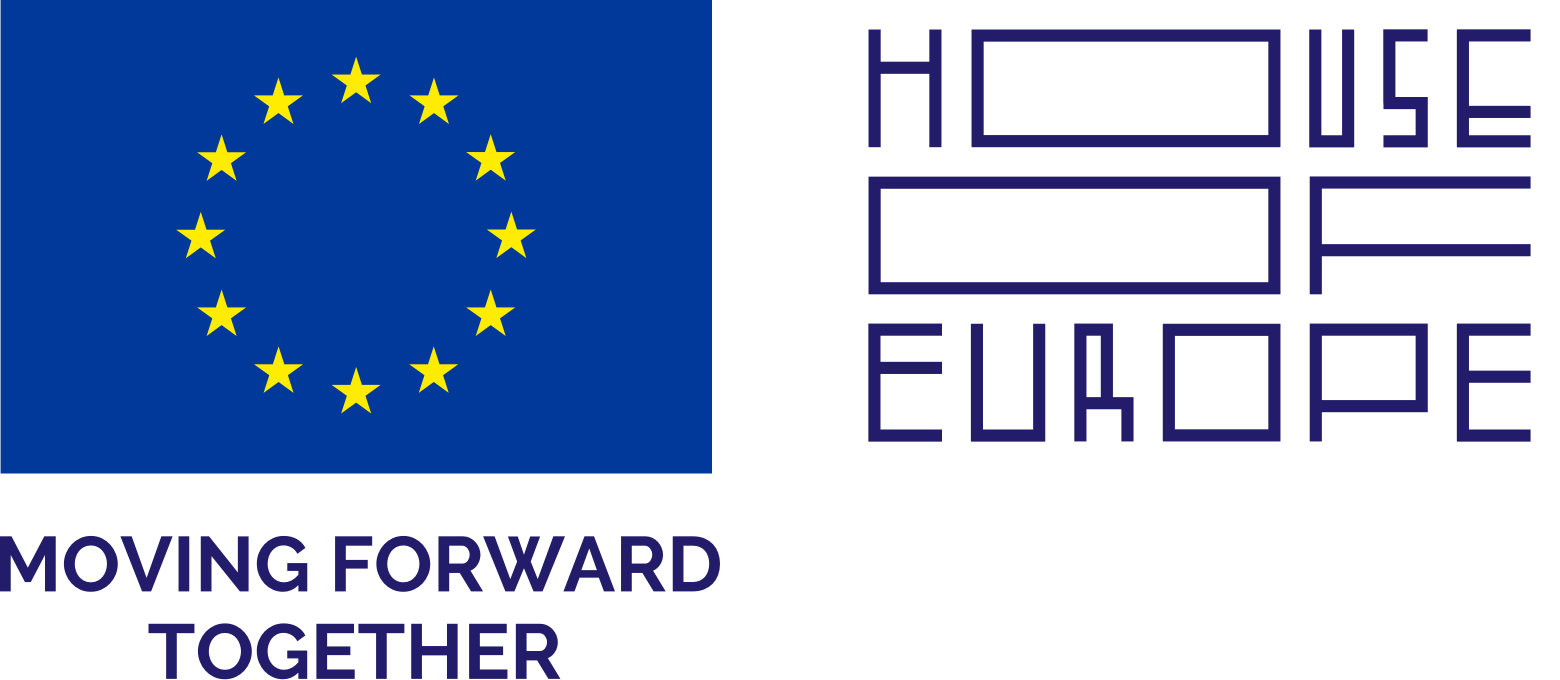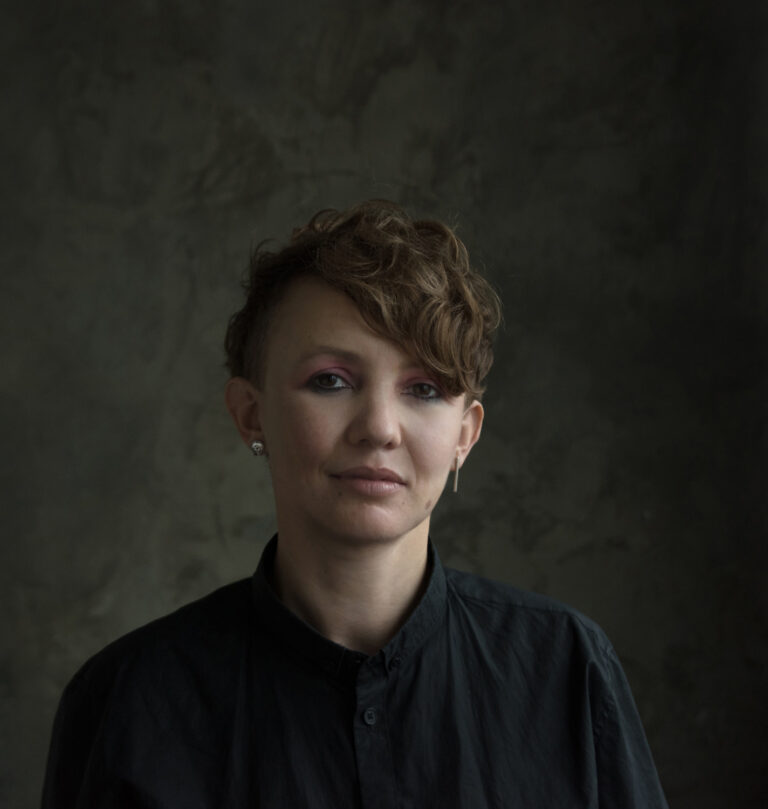

Born in Simferopol, Crimea, in 1980. Graduate of the National Academy of Fine Arts and Architecture in Kyiv, Theory and History of Art Department, Master’s research on Social Aspects of Museum Activities. Participant of documenta 14, Kassel, Germany (2017), co-curator of the project “Common Frontier”, a part of Kyiv Biennale (2015). Her works were exhibited in Ukraine, Poland, Spain and the UK. As an artist, she works with installations, various objects and photography. She also implements curatorial projects. She lives and works in Kyiv.
Practice.I find it difficult to identify myself through the lens of a single thing, and likewise to outline a clear framework of my own personality. I can act in many capacities – as an artist, a curator, a researcher, a photographer or an activist. This interdisciplinarity is on the one hand common for the modern times and precarious artistic work but it is also my own technique, a means to conceptualize and expand my experience. I research social and political phenomena, historic context, the history of arts and also the interactions between the aesthetics, politics and ethics. I scrutinize the art education system, both within the Soviet and post-Soviet realms, and also the role of museums, methods for constructing narratives and politics of memory, histories of social utopias. I am interested in the spectacularity of politics. A blurring of long-standing gender roles and relations within hierarchic systems appeal to me. Emancipation and self-emancipation are key notions for me. Another important point is vulnerability, assertion through non-obviousness, attention to the small imperceptible things. I am inspired by people who have the courage to search for new forms of interaction, who are capable of a deep and delicate feeling, and able at the same time to act consistently for the sake of future social transformations.
Body. I work with the immediate sensual experience beyond social relations and hierarchies, where one’s own body is the starting point. But also with a variety of manifestations of physicality in the context of social interactions: age-related changes, body and illness, body and medicine, traumatic experiences, unobvious violence, recreation, care, pleasure and hedonistic practices, self-pleasure.
Applied arts and crafts had long been considered “auxiliary” in Western Europe, often being dubbed as women’s, domestic or vernacular ones. I refer to the notion of “textile politics” where the textiles bridge the gap between the low and the high and include in the “textile discourse” a variety of social, economic and political aspects; and I research the body transformation background and techniques with the help of clothes. Handicraft is valuable to me as a phenomenon removed from “high art”. This applies generally to crafts which are often anonymous artworks. I am also attracted by the materiality of fabric, its sculptural and transformative qualities, its tactility. And I am interested in the borders of cloth touching body and the very borders of the body; the borderline conditions overall.
Nature and landscape. I am fascinated by the existence of nature beyond the human eye: crevices, cracks, sinkholes, darkness, overgrowths, brittleness. And at the same time – a landscape outlined and defined by an anthropic viewpoint. Advocacy of cultural and natural spaces, researching them, degrowth optics are important to me. My practice evokes themes of forced landscape changes, impact of political and economic factors on the urbanistic environment, “protective architecture” as a means of influencing unwelcome bodies in the city space, landscape transformation using camouflage and masking contrivances, artificiality, vernacular practices of reimagining the environment.
Photography 7 is an important medium for me. I consider it from the viewpoint of criticizing the photograph as a document. My photographic series reveal a gap in the homogenous social fabric, in the social order where post-apocalyptic fragments of the Soviet past (as if excavations) stick out on the surface, unneeded and imperfectly ruined like architectural wild grass. Subcultural bodies captured in the photographs are eloquent of negation of the social order and social norms; they also seem to emerge from cracks of the social system. Yet, they are distinguished by hedonism that derives not from building harmony and wellbeing but from plunging into abandonment, a wildness in sync with the wildness of nature, with the rewilding of Soviet remnants within the landscape8.
Soshenko 33. For the last few years, together with Taras Kovach, I’ve been developing an alternative educational and artistic space Soshenko 33 on the basis of historical artistic workshops of the National Academy of Fine Arts in Kyiv. An important principle is to create an autonomous zone in the framework of the conservative academic system as well as a space for critical reflection and communication. The program of artistic residencies and projects was created on Sochenko 33. Those projects were related with the transformation of the environment in the context of political and economic changes, reflection on the system of Soviet and post-Soviet art education, self-organization, collectivity, utopias, and nature. An interdisciplinary approach to art projects is relevant to me, so the projects can include artistic production, critical discussion, direct action, and parties. And also systematic work with documents – creating an archive, granting cultural heritage status to workshop buildings, developing the concept of the park on the site, protecting trees.
Text written in collaboration with Oksana Briukhovetska (2022).
1Image: Anna Sorokovaya, Landscape, 2017, installation, Visual Culture Research Center, Kyiv. Courtesy of the artist.2Image: Anna Sorokovaya, Reward, 2016, installation, Ermilov Center, Kharkiv. Courtesy of the artist.
3Image: Anna Sorokovaya, Under cover, 2014, installation, print on fabric, hotel Ukraine, Kyiv. Courtesy of the artist.
4Image: soshenko x tokonoma, documenta 14, Kassel, 2017. See: http://annasorokovaya.com/soshenko-x-tokonoma/
5Image: Anna Sorokovaya, Dismantelment, curatorial project, Nadie Nunce Nadi No gallery, Madrid, 2019. See: http://annasorokovaya.com/dismantelment-демонтаж/. Courtesy of the artist.
6Image: Anna Sorokovaya, Common frontier, curatorial project, Curatorial group: Anna Sorokovaya, Taras Kovach, Alina Yakubenko, Anton Lapov, Soshenko 33, within the framework of Kyiv Biennial, 2015. See: http://annasorokovaya.com/common-frontier/. Courtesy of the artist.
7Image: Anna Sorokovaya, photography, 2019. Courtesy of the artist.
8Image: Anna Sorokovaya, photography, 2015. Courtesy of the artist.
Народилася у 1980 році в Сімферополі, Крим. Навчалась у Національній академії
образотворчого мистецтва та архітектури в Києві на факультеті теорії та історії
мистецтва, захистила магістерське дослідження на тему соціальних аспектів музейної діяльності. Брала участь у documenta 14, Касель, Німеччина (2017), була співкураторкою проєкту «Спільна межа» у рамках Київської бієнале (2015). Її роботи експонувались в Україні, Польщі, Іспанії, Британії. Як художниця працює з інсталяціями, об’єктами та фотографією. Реалізує кураторські проєкти.
Практика. Мені складно ідентифікувати себе через щось одне, так само як і окреслити чіткі межі власної особистості. Я можу діяти з різних позицій – як художниця, кураторка, дослідниця, фотографка чи активістка. Така міждисциплінарність з одного боку характерна для сучасності й прекарної художньої праці, але вона також є моїм власним методом, способом осмислювати і розширювати мій досвід. Я досліджую соціальні й політичні феномени, історичний контекст, історію мистецтва, а також взаємодію естетичного, політичного й етичного. Критично розглядаю систему художньої освіти, зокрема в радянській і пострадянській дійсності, а також роль музею, способи конструювання наративів і політики пам’яті, історії соціальних утопій. Мене цікавить видовищність в політиці.
Мене приваблює розмиття усталених гендерних ролей та відносин всередині ієрархічних систем. Емансипація й самоемансипація – ключові для мене поняття. Також важливою є вразливість, утвердження через неочевидність, увага до непомітного. Мене надихають люди, які мають сміливість шукати нові форми взаємодій, які здатні глибоко й тонко відчувати і водночас послідовно діяти задля суспільних трансформацій.
Тіло. Я працюю з безпосереднім чуттєвим досвідом поза соціальними відносинами та ієрархіями, коли точкою відліку є власне тіло. Разом з тим – із розмаїттям проявів тілесності в контексті соціальних взаємодій: вікові зміни, тіло й хвороба, тіло й медицина, травматичні досвіди, неочевидне насилля, відпочинок, турбота, задоволення й гедоністичні практики, self-pleasure.
Прикладні мистецтва довгий час вважалися в системі західного мистецтва «вторинними», їх часто кодували як жіночі, домашні чи вернакулярні. Я звертаюся до поняття textile politics, де текстиль долає розрив між високим та низьким і включає в «текстильний дискурс» різноманіття соціальних, економічних і політичних аспектів; вивчаю історію й методи трансформації тіла за допомогою одягу. Рукоділля цінне для мене як феномен, витіснений з «великого мистецтва». Це стосується ремесла загалом, яке часто є художньою працею без авторства. Мене також вабить матеріальність тканини, її скульптурні й трансформативні якості, тактильність; хвилюють кордони дотику тканини до тіла і межі самого тіла; загалом межові стани.
Природа і ландшафт. Мене захоплює буття природи поза людським оком, тріщини, щілини, провалля, темрява, зарослі, крихкість. І водночас – ландшафт, окреслений і визначений людським поглядом. Важливою для мене є адвокація культурних і природних просторів, їх дослідження, degrowth оптика. В моїй практиці постають теми насильницької зміни ландшафту, вплив політичних і економічних факторів на урбаністичне середовище, «захисна архітектура» як спосіб впливу на небажані тіла в просторі міста, трансформація ландшафту за допомогою камуфляжу й маскування, штучність, вернакулярні практики перетворення середовища.
Фотографія 7є для мене важливим медіумом. Я розглядаю її з позиції критики фотографії як документа. В моїх фото-серіях оприявнюється розрив гомогенної соціальної тканини, соціального порядку, де постапокаліптичні фрагменти радянського минулого (немов розкопки) стирчать з поверхні, непотрібні і недознищені, як архітектурні бур’яни. Субкультурні тіла на фото говорять про негацію соціального порядку і соціальних норм, вони також ніби виринають із тріщин суспільного ладу. Втім їм притаманний гедонізм, який постає не з вибудовування гармонії і достатку, а з поринання в закинутість, дикість, співзвучну з дикістю природи, зі здичавінням радянських залишків в пейзажі8.
Сошенко 33. Протягом кількох останніх років спільно з Тарасом Ковачем я займаюсь розбудовою альтернативного освітньо-мистецького простору Сошенко 33 на базі історичних творчих майстерень Національної академії образотворчого мистецтва (Київ). Важливим принципом є створення автономної зони в рамках консервативної академічної системи, а також простору для критичної рефлексії та комунікації. На Сошенко 33 була започаткована програма художніх резиденцій та реалізовані проєкти, у тому числі пов’язані з трансформацією середовища в контексті політичних та економічних змін, рефлексією над системою радянської та пострадянської мистецької освіти, самоорганізацією, колективністю, утопіями, природою. Актуальним для мене є міждисциплінарний підхід до мистецьких проєктів, коли вони можуть містити художнє виробництво, критичні дискусії, прямі дії та вечірки. А також системна робота з документами – створення архіву, надання статусу культурної спадщини будинку майстерень, розробка концепції парку на території, захист дерев.
Текст створено у співпраці з Оксаною Брюховецькою (2022).
Переклад з російської Оксани Брюховецької.
1Зображення: Анна Сороковая, Пейзаж, 2017, інсталяція, Центр візуальної культури, Київ. Надано художницею.2Зображення: Анна Сороковая, Відзнака, 2016, інсталяція, ЄрміловЦентр, Харків. Надано художницею.
3Зображення: Анна Сороковая, Укриття,2014, інсталяція, друк на тканині, готель Україна, Київ. Надано художницею.
4Зображення: soshenko x tokonoma,2017, documenta 14, Kassel. Дивись: http://annasorokovaya.com/soshenko-x-tokonoma/ Надано художницею.
5Зображення: Анна Сороковая, Демонтаж, 2019, кураторський проект, галерея Nadie Nunce Nadi No, Мадрид. Дивись: http://annasorokovaya.com/dismantelment-демонтаж/ Надано художницею.
6Зображення: Анна Сороковая, Спільна межа, 2015, кураторський проект, кураторська група: Анна Сороковая, Тарас Ковач, Алина Якубенко, Антон Лапов, Сошенко 33, у рамках Київської бієнале. Дивись: http://annasorokovaya.com/common-frontier/ . Надано художницею.
7Зображення: Анна Сороковая, фотографія, 2019. Надано художницею.
8Зображення: Анна Сороковая, фотографія, 2015. Надано художницею.